

The Elegance of Traditional Japanese Music ~ Shamisen and Kotsuzumi recital with Japanese dance ~
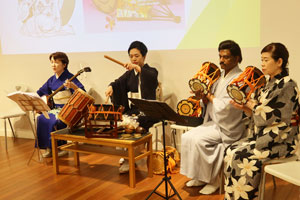 All of the music performances were played by artists including Nami-sensei, Ro-sensei, and Naya-sensei. |
On 29 August 2025, JCC held a recital of traditional Japanese musical instruments, shamisen and kotsuzumi. We were delighted to welcome back Ms Kineie Nami and Ms Sakurama Ro Kyeong Soon, alongside the support of Mr Naya Reitoku, as well as Reitokukai Japanese Dance Group. There was a grand total of 14 mesmerising performances, including traditional compositions like Sakura Sakura and Taiko no Kyoku and contemporary songs from My Neighbour Totoro and Dragon Quest. Some of the audience members even had the opportunity to play either the shamisen or kotsuzumi, under the guidance of the artists, and spontaneously performed a short excerpt of Sakura Sakura. |
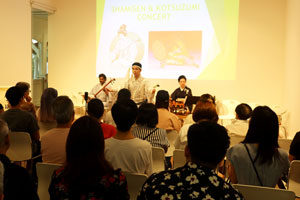 Kappore describes how Kinokuniya Bunzaemon became wealthy by shipping tangerines, and the dancer mimes the sails of the ship and the heavy burdens of riches. |
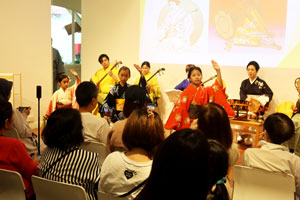 Sakura Sakura depicts the spring season of Japan, as represented by the beautiful sakura flowers. |
|
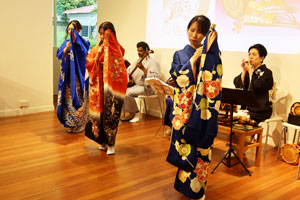 Harusame metaphorizes a young girl to a sparrow, and her lover to a plum tree. |
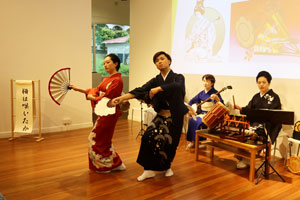 Umewa Saitaka is a popular song played in zashiki or Japanese Tea Room, where geishas entertain their guests. |
|
 Tsuru Kame is an adaptation from the Noh play of the same title. It is a custom in the imperial palace to have the dance of crane and tortoise during the opening of spring season to celebrate imperial longevity. |
 Sanosa depicts a young girl’s emotions and indecisiveness in ending her relationship with her lover. |
|
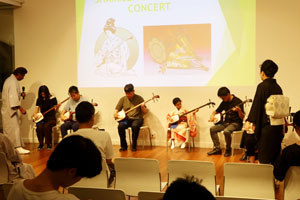 Audience members trying their hand at playing the shamisen. |
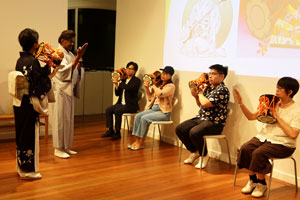 Audience members trying their hand at playing the kotsuzumi. |
|
Japan Creative Centre 4 Nassim Road, Singapore 258372 +65 6737 0434 / jcc@sn.mofa.go.jp http://www.sg.emb-japan.go.jp/JCC Nearest parking at Orchard Hotel & Delphi Orchard |
 |